Empire Javelin (1944) |
|
Message Board |
|
Messages 1 to 24 |
24. July 9, 2015 My father, Cpt. Franklin W. Collins, was an officer in the newly organized 15th Army at Ft. Sam Houston. He shipped to the European theater, Scotland for training in late 1944, and then on to France on Dec. 24th, 1944. He was on the Empire Javelin at its sinking in the English Channel and was picked up by a French sub chaser. He was reunited with his unit in France and then on to Belgium under the command of General Lenoard T. Gerow. James M. Collins |
|
23. Mar. 14, 2015 My uncle, Roy Zarbock, was with the 15th Army and a survivor of the Empire Javelin sinking. I am trying to compile more information about the 15th Army European theater movements and any other information about their training in England. Can anyone post possible sites with historical information? Pam Zarbock Bell |
|
22. Oct. 1, 2014 My father, Pfc. Donald Malcolm Boyd, was carried by the Empire Javelin to Omaha Beach on 4/5/6 July 1944, with most of the rest of the 134th Inf. Reg., 35th Div. He participated in the taking of St. Lô, was wounded, 20 July, 1944 and returned to Cornwall for 103 Days in traction for a broken femur. He recovered and finished his college studies at Princeton University, a beneficiary of the GI Bill. My father, Pfc. Donald Malcolm Boyd passed December of 2005, a month short of his 81st Birthday. I am sorry to have found this site nearly ten years after his death since I shared with him many discoveries that I found on the internet, a medium which he found difficult to utilize. I traveled with him to St. Lô. in July of 2004. Thank you for making this site. Malcolm Boyd |
|
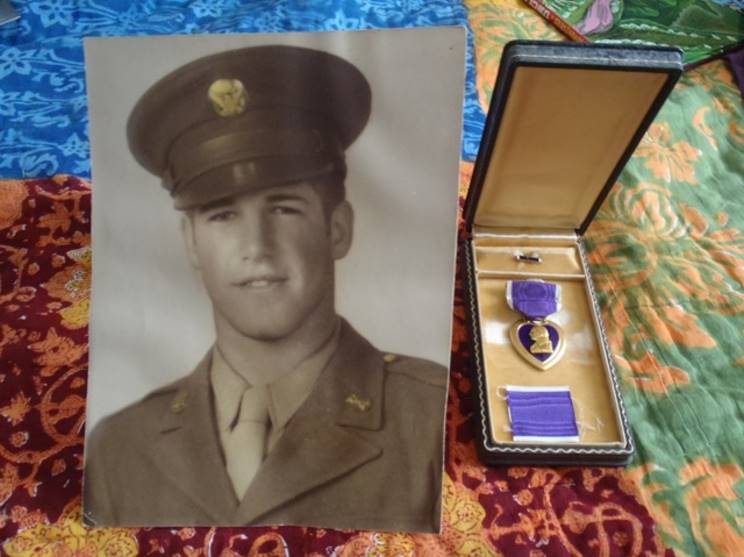 |
|
21. June 10, 2014 My grandfather, Army Sgt. Harry Scott Sprague, was on the Empire Javelin when it went down. He was being transported between England and France. He survived. My mother is thrilled to be able to put pictures with the stories. Thank you, Rebekah Banks Westminster, Colorado |
|
20. Dec. 19, 2013 My father Gerrard Walsh served on HMS Hargood which is the ship in the background of the sinking Empire Javelin and not as you state the French Destroyer L'Escarmouche. He went onto the sea deck of the Javelin bandaging and treating wounded and dying troops before this photo was taken. He then returned with survivors onto the Hargood. The Hargood was the last ship by the Javelin as she sunk. Captain Pringle who was commanding was Capt. D, and would have had authority on ship movements at that point. His ship would leave last as senior officer afloat, other ships were retained at various distances to patrol for u-boats or e-boats. My father who is sat by me as I write this, has pointed out the differences in the silhouettes of the two ships, which I have just checked on other photos and this bears him out. He remembers men being offered the last rights as he attempted to stop them bleeding to death, and the feeling of his hatred towards the priests who had come onboard and didn't seem able to help in any practical way, even to the extent of being on their knees praying by his side while he was shouting at them to hold tourniquets or put pressure on terrible wounds, he is crying while telling me this. He is describing the chaos, the screaming and how a Naafi bloke who was first aid trained helped him manhandle victims, holding them down to try and treat them. They cut trousers off and because they were running out of bandages used newspaper directly onto the wounds then tied the trousers on top held on with shoelaces. He describes how his jumper and trousers were soaked and heavy with blood. He has never told me this before, the photo which I found on line has opened old wounds for him, but he still is saying with damp eyes'we didn't leave one behind when we left, not one' Sean Walsh |
|
19. Apr. 22, 2013 My grandfather Vic Bates was a Merchant Navy cook on the SS Empire Javelin. On the night of December 28th 1944 it happened to be carrying the HQ staff of the then-secret 15th US Army, and hit a mine (this is the most likely event; it was initially thought that it was torpedoed but research into U-boat activity points to this being unlikely). About an hour later, two minutes after the last man jumped off, the ship blew up and sunk within 10 minutes. The men were picked up by the nearby French frigate L'Escarmouche; about 20 lives were lost in total. Vic survived and hopped a ship or two to get home, with nothing but what he was wearing at the time of the sinking and a borrowed raincoat. At this stage of the war my grandmother was kept busy helping to make anti-submarine nets whilst pregnant with my mother. She was most annoyed with him when he arrived at home in a rather filthy state (although on telling me the story she seemed most upset that he was without a hat!). She mellowed once he told her that he almost didn't make it back. My grandfather never talked about the war at all and didn't collect the medals that he was entitled to. I'm currently in the process of negotiating with the British government to claim them on his behalf. Kind regards, |
|
18. Oct. 3, 2012 My father-in-law, Jimmy Green, was Divisional Officer of 551st Landing Craft Assault Flotilla based on the SS Empire Javelin on D-Day. At the US National D-Day Memorial in Bedford, Virginia, there is a part called the 'Green Circle' dedicated to him with a bronze plaque of his face. From the SS Empire Javelin on D-Day, very many US troops were killed. All 32 on my father-in-law's LCA were killed. The first wave of 6 LCAs carried A Company of 116th Infantry Regiment. Many were from Bedford, Virginia. Their losses on Omaha Beach on D-Day led to the highest per capita losses on men from any US town on D-Day. This led in turn to the US National D-Day Memorial being built in Bedford, Virginia. 116th Infantry Regiment lost 341 men on D-Day, but without searching further I cannot say how many were from 1st Battalion on the SS Empire Javelin. Several support units were also transported on the SS Empire Javelin with additional casualties. Suffice to say that the SS Empire Javelin was at the spearhead of the invasion of Omaha Beach. She was one of a few, new, large and very fast LSI(L) class transport ships (Landing Ship Infantry (Large). Shown below is the SS Empire Javelin in May 1944 in a Scottish Loch for training exercises, she was home to 551st Landing Craft Assault Flotilla, R.N.V.R. LCAs can be seen hanging from the ship's davits. Prior to D-Day, the SS Empire Javelin sailed to the south coast of England to Weymouth and then towards Slaton Sands for Fabius exercises carrying 1st Battalion of 116th Infantry Regiment of the 29th Infantry Division of the Army of The United States of America. Returning to Weymouth, the SS Empire Javelin set sail for the Normandy coast with the same US Infantry on the evening of 4th June, only to be ordered back to Weymouth when D-Day was postponed from 5th June to 6th June. Sailing again on the evening of 5th June, the SS Empire Javelin anchored 10 miles off the coastline of Normandy in a 12-foot swell in pitch black darkness. The opening scenes of Saving Private Ryan refer to 'D-Day, Dog Green, Omaha Beach, 06:30' In reality, this was the destination for the troops on the SS Empire Javelin, transported by the British LCA landing craft with R.N.V.R Sub-Lieutenant 'Jimmy' Green in command of the first wave of 6 LCAs from the SS Empire Javelin carrying A Company of 116th Infantry Regiment, 'The Bedford Boys' with two LCAs from HMS Prince Charles carrying C Company 2nd US Ranger Infantry Battalion attached on their right flank. The two HMS Prince Charles LCAs had joined the first wave at the SS Empire Javelin. The role of the ship on D-Day is referred to in a book called 'Omaha Beach' by the American historian Joseph Balkoski. Best regards, Kevan Elsby |
|
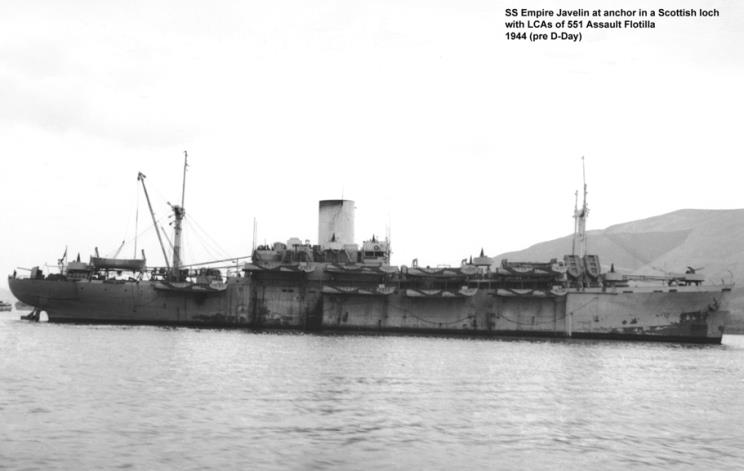 |
|
SS Empire Javelin. |
|
 |
|
Members of the 551st Landing Craft Assault Flotilla, R.N.V.R. |
|
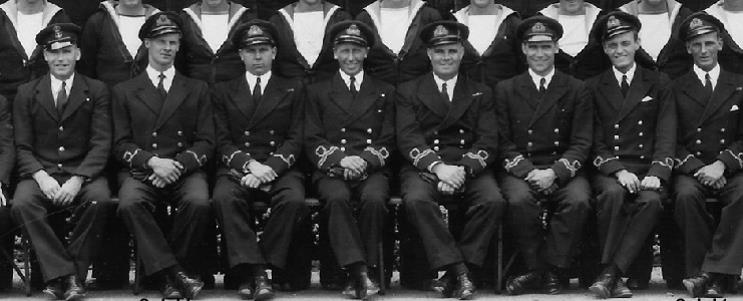 |
|
A close-up of the above photo, from left to right are; 1. Unknwon 2. Sub-Lt. Peter Mason 3. Unknown. 4. Lt. Jimmy Green 5. Lt. Freddie Grant 6. Lt. Tom Arlidge 7. Sub-Lt John Swift 8. Sub-Lt. Ermest "Joe" Pallant |
|
17. June 30, 2012
|
|
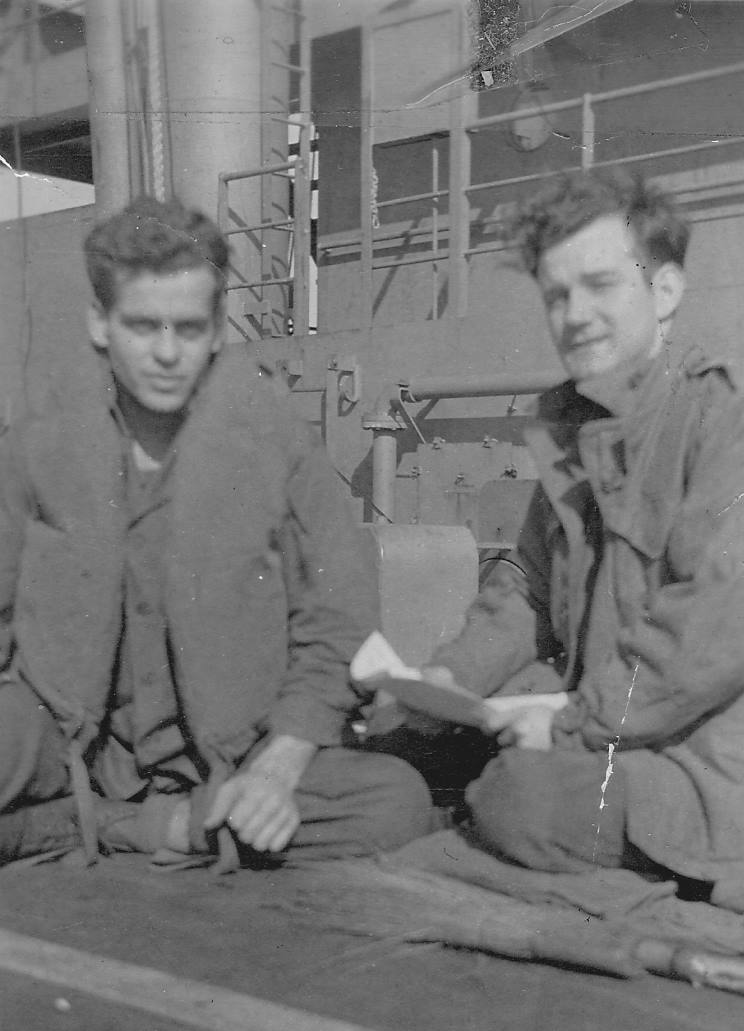 |
|
Private 1st Class Robert J. "Bob" Guyser (left) and Peter A. Golden seen on Empire Javelin. |
|
16. Feb. 6, 2012 I would like to thank Ann Ferguson Cooper for providing the Schoichet's account of the sinking of HMS Empire Javelin. My father, William E. Canedy from Cincinnati, Ohio, was a survivor, but gave us only a few details. Thanks to that story my sister and I have an idea of what that day was really like. He received a Purple Heart from his injuries in the incident and a commendation; he allowed an officer to exit ahead of him, but he always said it was because he needed to see how it was done. He never thought he was brave - imagine! We would be grateful for resources on the 15th Army and how to look up medals and honors to document family history. We have copies of the sketches he kept in his home office of the Javelin sinking and of Doddington Hall. My dad passed away in 1986, so we are thrilled to have some insight into his wartime experience to share with our families. Sincerely, Kathy Canedy Lobe Georgia, U.S.A. |
|
15. Jan. 16, 2012 My Grandfather, Joseph Bongiorni, was a member of the 3188 Signal corp that was onboard the Empire Javelin when it was torpedoed. I have been trying to locate any type of documents that would list the names of those onboard. My grandfather will be 90 years old and tells us stories of that event. If anyone knows any contact that would help me find this information that would be greatly appreciated. Julie Misseri |
|
14. May 12, 2011 My father, Sgt. Frank J. Mueller, typed up his account of the sinking of the Empire Javelin and I discovered the typewritten story in my mother's belongings after she died approximately a year ago. Along with this story, I also found over 1,000 letters written by my parents from 1942-1945. I am publishing the letters in a 3-Volume set entitled "More Than Anything in the World". The first volume (Volume 1, 1942-1943) is now available on amazon.com here is the link: More Than Anything in the World. My Dad's account of the sinking of the Empire Javelin will appear in the next volume, to be published approximately a year from now. However, I am providing a scan of the original typed version for the viewers of MaritimeQuest. I was thrilled to find so many other people who preserved the details of this amazing event in the history of WWII. Thanks, Kathleen S. Mueller www.ksmueller.com |
|
13. May 11, 2011 My Dad, who is 90 but still has a good memory of past events, was on the Empire Javelin when it was hit, but he credits his rescue and that of many other American soldiers to a French vessel, the Scaramouche (sic.). He said the French captain allowed his vessel to be temporarily lashed to the side of the Empire Javelin so that the troops could scramble aboard, risking his own ship and crew, but saving many American lives. He remembers distinctly that the life boats had been dropped over the side empty, and that the supports kept hitting the gun mounts on the French ship, and that initially a single French sailor was attempting to unload the shells from the Scaramouche's deck guns. He does not let anyone disparage the bravery of the French, not then and not now. Kathi Jeffers |
|
Note: the name of the French ship was
L 'Escarmouche. |
|
12. Feb. 10, 2011 I am looking for some documentary on SS Empire Javelin any ideas where I can get it. Vincent Misseri |
|
11. Dec. 28, 2010 I just recently came across your excellent web site while researching information regarding the HMS Empire Javelin, which was sunk on this day, December 28, 1944. My father was a sailor aboard one of the ships that Came to the Empire Javelin's rescue, aboard the USS LST-325. In 2004 I published a history of the USS LST-325 entitled Mosier's Raiders . I was very happy to come across all the added information and accounts of the sinking, I only wish I could have seen that information before the book was published as it would have greatly fleshed out my telling of the event. I was also very happy to learn of the proper credit for who took the two pictures of the sinking, as I had been given copies of those same photographs from one of the 325's officers while I was researching my book. Here is the a personal account from Ted Duning, one of the LST-325's officers. This is an excerpt from my book and you may post this on your web page if you so desire. One of the outstanding events in my memory was the SOS call received while crossing the Channel from France and joining another LST with full speed ahead to the site of the torpedoed troop ship, already down by the stern off of which 1400 troops had been taken aboard a French destroyer. The LST's, each in turn, pulled alongside the destroyer to take off 700 troops each at some risk to these men since a rather heavy sea was running and they had to climb rope ladders from the destroyer deck up to the much higher decks of our ships. Once these were aboard we looked over to where the doomed ship was now three-quarters under water with the bow straight up and we watched as she slowly slipped down, out of sight. The sight of a ship going down like this is not one likely to be forgotten. -Ted Duning, First Lieutenant You may already know this, but the LST-325 is now a memorial and museum ship in Evansville, Indiana, USA, and is fully functioning. Here is their web page: www.lstmemorial.org Thank you for your work in honoring the men of the Empire Javelin and the other ships on your web site! David Bronson Kalamazoo, Michigan |
|
10. Nov. 8, 2010 I have framed sketches of the sinking of the Empire Javelin that belonged to my father Bert L. Bratton (a passenger). He passed in 96' and they are stored in the attic. If anyone is interested is seeing them please contact me. Bert R. Bratton, M.D. Slidell, Louisiana |
|
Dec. 19, 2010: The Sketches of Empire Javelin can be seen in The Art of Empire Javelin. The complete set of sketches can be seen in the Art of J. C. Hazen, Jr. section. |
|
9. Nov. 8, 2010 I came across your page today after I was searching for information about the Empire Javelin. This ship was captained by my Grandfather, John McLean, when it sank in the English Channel in 1944. My grandfather survived the war and settled peacefully in the North-East of the country with his wife and their daughter - my Mother. Unfortunately he died well before I was born in 1975 so I never knew him. However, my Mother and Grandmother were proud of his dedication to service and talked of him often. I came across a short documentary film about Francis Henderson, a soldier who was on board the Empire Javelin the day it sank. He spoke movingly of how he felt that if it wasn't for "the British Captain", he wouldn't have got off the boat alive. I would really appreciate it if you could put me in touch with Mr. Henderson (or anyone who knows him), or anyone else who might be able to tell me about their experiences on the Empire Javelin that day. I know my Mother would be very grateful to hear of these experiences. Many thanks for any help you may be able to give me. Warm regards, Alan Slater |
|
 |
8. Oct. 5, 2010 I regret to say that, on Sept. 1, 2010, my father, Lewis D. Rindone passed away. David L. Rindone |
7. Aug. 28, 2010 My father, Thomas Rudolph Elder, was a U.S. soldier aboard the Empire Javelin when it was torpedoed. He tells a story of being in the bottom of the ship and starting to go top side on the only stairs going up when he realized he had forgotten his life jacket. He went back to get the jacket and ended up last in line to escape the basement of the vessel. He survived, however, serving in France, Holland, Austria and Germany during WW II. He later served in the Korean War, retiring from the Army in the 1960's after 27 years of service to his country. Rudy Elder |
6. July 5, 2010 For introduction, David Rindone is my essential source for anything to do with the sinking of HMS Empire Javelin. I live across the Atlantic, not far from where the ship embarked on its last voyage. Why the interest? My uncle - Arthur Henry Coxhead was the Radio Officer on the Empire Javelin when it got hit. He stayed tapping out Morse until the rescue was complete. Then he had to jump in the water. The event impresses me. So does Lewis Rindone. Last thing I would think about if a ship was disappearing under me would be to grab my camera and photo it. Pretty much in the Frank Capra tradition: those gentlemen had a whole load of balls, me thinks. Incidentally, I made a point of standing on Omaha beach when coming back from the Loire in France. It can tell you, it hits you. Good wishes, John Coxhead |
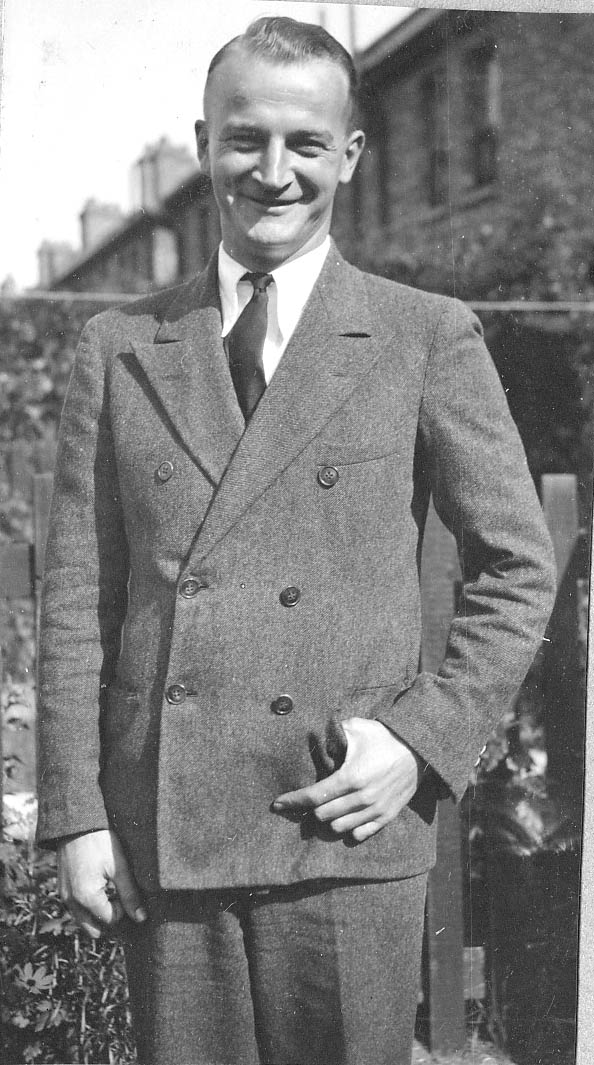 |
Arthur H. Coxhead seen in 1931. |
5. June 22, 2010 My father, Lewis D. Rindone, was on board the Empire Javelin when it was torpedoed, and, being in a Signal Corps unit, had a camera, and took the only known photographs of the Empire Javelin sinking. I believe the two photographs in the Empire Javelin gallery are part of a series of six shots of the sinking taken by my father. I don't know how this gentleman got hold of them, but, when I talked to my father this morning, he said he gave a set to his C.O. at the time. Dave L. Rindone Arizona, USA |
Reply 1 May 20, 2011 My grandfather, Paul L. Telech, Sr., was on board the Empire Javelin on December 28, 1944 - he may have been your father's C.O. I say this because he has a set of these photos that you speak of. Unfortunately my grandfather just recently passed away on May 12th, so I can't ask him. However, we discovered while going through things for the funeral, that he kept small notebooks that he used throughout the war as well as the rest of his life. Some of the notebooks had the names of his 21 men that he brought with him on the Javelin, among other things. My grandfather was a member of the 3188 Sig. Svc Bn Co."C" and achieved the rank of T/Sgt. He was in charge of 21 men and assigned special duty with Detachment "G"3188 Signal Service Bn Co."C". He served in England and in France and received the American Service Medal, Europe-African-Middle Eastern Service Medal, Good Conduct Medal, World War II Victory Medal, and French Croix de Guerre with Bronze Star. I just thought that I would share. Thank you, Becky Ryan-Coon |
4. Apr. 19, 2010 My father, Anthony Cappuccilli, was also on the Empire Javelin when it was sunk. As a child I recalled he had two pen and ink drawings of the initial explosion and the sinking. I do not know what became of the two drawings but would love to have a copy if any exist. I did come across a photo of the Empire Javelin sinking and had a copy made. James Cappuccilli |
3. Nov. 21, 2009 My father, Chauncey Dwight Ferguson Jr., was on the Empire Javelin when it was sunk by a torpedo. Unfortunately, he never spoke of his experience of December 28, 1944. He died of polio in 1951 at the young age of 34. However, I do have a transcript of an account of the sinking by Francis Henderson, another soldier that was on the ship on that fateful day. He is a member of the small church my mother and step-father attend - what a small world! (Schoichet's account of the sinking of HMS Empire Javelin) Ann Ferguson Cooper Temple, Texas |
2. Nov. 19, 2009 I was aboard the USS LST-532. We left Cherbourg France for England, after unloading troops to repel Germans at Battle of the Bulge, when we received an SOS from the Empire Javelin. As we approached she was sinking. A French vessel was picking up survivors. We picked up a few. The French vessel tried to come alongside to allow survivors to board. The heavily mined sea was rough and as the French vessel came alongside she tore a hole in our side. The hole was about 3 feet high and about 12 feet long. Fortunately it was above the waterline. We headed back to England after the Javelin sank. Rudy Kirincic Munster, Indiana |
1. Aug. 18, 2009 My father, Donald Freeland, was a 20 year old US Army private on his way to fight the Germans in France when the Empire Javelin was torpedoed. He survives to this day with vivid memories of the rescue. Watching the ship sinking he remembers a British officer waving to the survivors on the deck of the French frigate. Everyone presumed this was the ship's captain, he said. Perhaps, however, it was one of the others of these listed casualties, as the Captain is not on the list. Can anyone provide any information on the Captain's name and whether he survived the wreck? Herb Freeland Roselle Park, New Jersey |
Reply 1 The masters name was John McLean, he did survive, but I don't know what became of him. (Nov. 8, 2010: Revision, see message 9 for details about the master.) Michael W. Pocock (webmaster) |
To post a message, comment or reply please email the webmaster. All replies will be forwarded to the original sender. |
Messages 1 to 24
|
||
Class Overview |
Message Board |
|
Page published Nov. 21, 2009 |